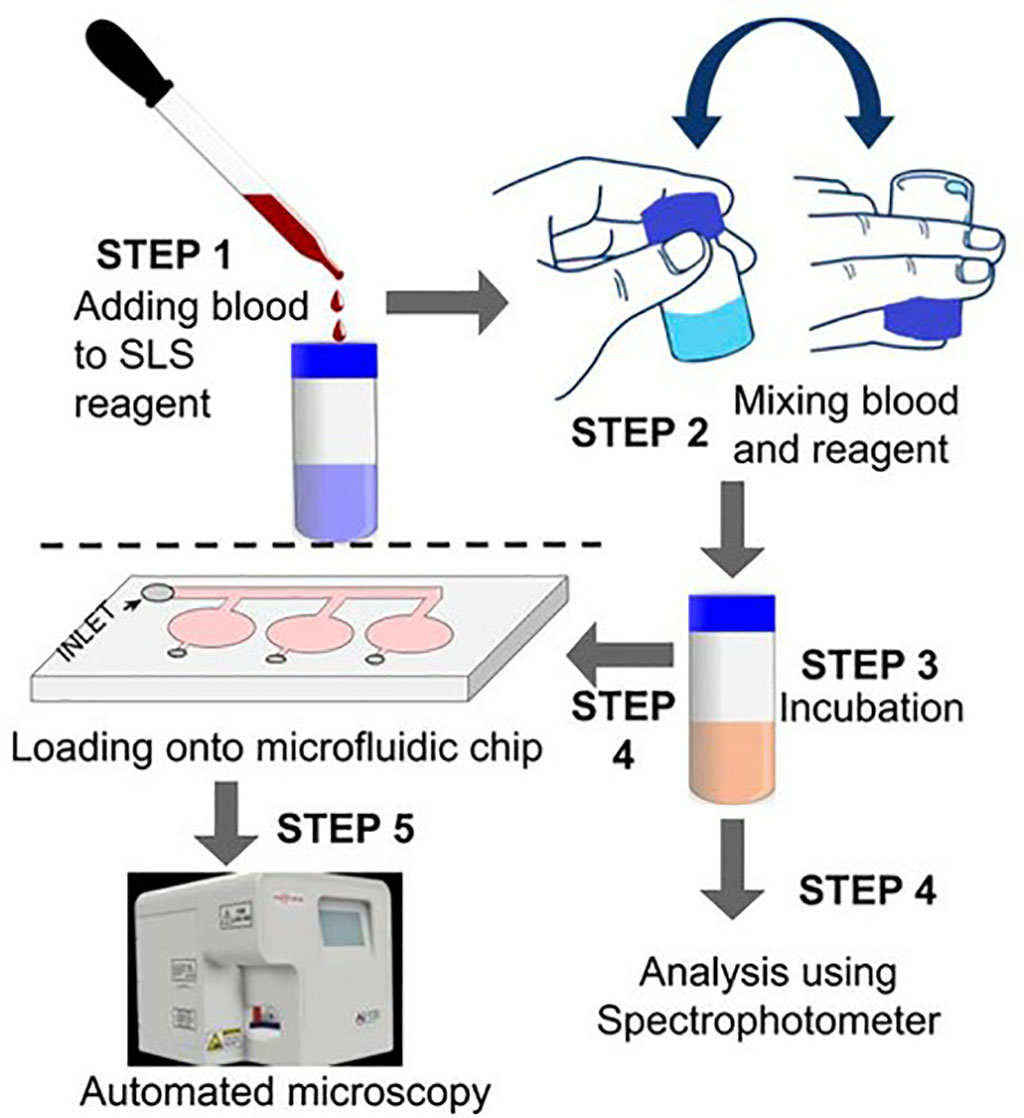Hemoglobin Levels Measured with AI Microscope, Microfluidic Chips
By LabMedica International staff writers
Posted on 10 Mar 2021
A complete blood count can help ascertain the health of a patient and typically includes an estimate of the hemoglobin concentration, which can indicate several conditions, including anemia, polycythemia, and pulmonary fibrosis.Posted on 10 Mar 2021
All techniques used in the estimation of hemoglobin in the blood can be classified into invasive and non-invasive. Non-invasive techniques, though very convenient because of the absence of needle prick, suffer from inferior performance; therefore, these techniques are almost always used as screening tools.

Image: Workflow for hemoglobin estimation using an automated microscope (Photo courtesy of Sigtuple Technologies).
Bioengineers at Sigtuple Technologies (Bengaluru, India) and the Indian Institute of Science (Bengaluru, India) have developed a new AI-powered imaging-based tool to estimate hemoglobin levels. The setup was developed in conjunction with a microfluidic chip and an AI-powered automated microscope that was designed for deriving the total as well as differential counts of blood cells. The assay parameters, including SLS reagent-to-blood volume ratio, total reaction volume, the concentration of sodium dodecyl sulfate, and microfluidic chamber design, were optimized in order to achieve quantitation capability across a clinical range of hemoglobin using a path length suitable for the microfluidic platform.
Besides quantitative correlation with a clinically accepted-validated standard method, the spectral absorption characteristics of the hemoglobin–SLS reagent mixture in the newly developed assay were compared with those of conventional SLS assays. The SLS–blood/Hb standard solutions were analyzed using Erba Chem 5× clinical chemical analyzer (ERBA Diagnostics GmbH, Mannheim, Germany), and for hemoglobin estimation, the recommended settings with absorbance measurement at 546 nm were used. All UV–vis absorption measurements were performed using the NanoPhotometer NP 80, IMPLEN, Munich, Germany). The hemoglobin concentrations of both blood samples and in-house prepared hemoglobin standard solutions were measured using a commercial XP-100 hematology analyzer (Sysmex, Kobe, Japan).
The scientists reported that the microfluidic chip in combination with an automated microscope was able to achieve a Pearson correlation of 0.99 in a validation study comparing the newly developed method and a commercially available hematology analyzer, with a turnaround time of 10 minutes, including incubation time. The clinical performance was ascertained, and the method achieved a sensitivity of 92.3% and a specificity of 53.8%.
The automated microscope, which normally uses a combination of the red, green, and blue LED, used just the green LED during the hemoglobin estimation mode, and additionally, the grayscale values from the green channel of the image generated by an e-con camera. These optimized parameters, including exposure time, gain, white balance, and local tone mapping, were found to result in a setup capable of measuring hemoglobin in the blood, which was demonstrated through a clinical verification with 27 blood samples. Besides measuring hemoglobin in the blood, a similar setup with minor modifications could be used to measure protein content, cholesterol, and glycated hemoglobin. The study was published on February 23, 2021 in the journal AIP Advances.
Related Links:
Sigtuple Technologies
Indian Institute of Science
ERBA Diagnostics
IMPLEN
Sysmex














